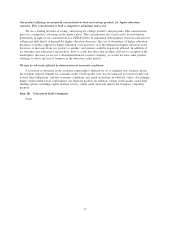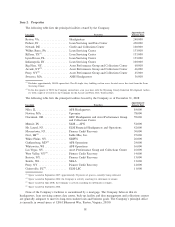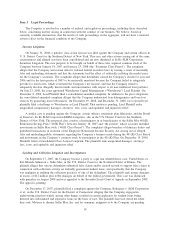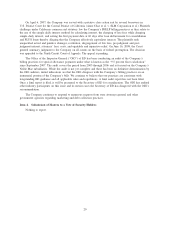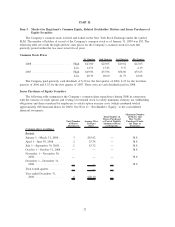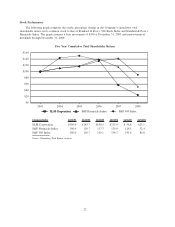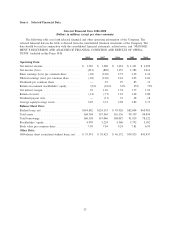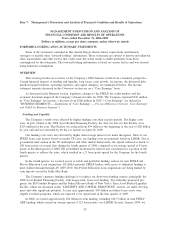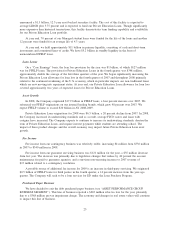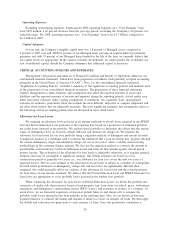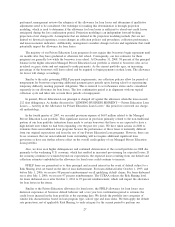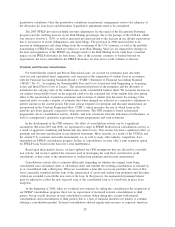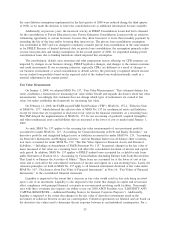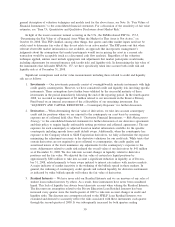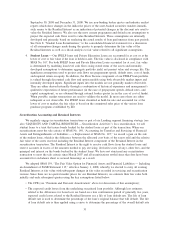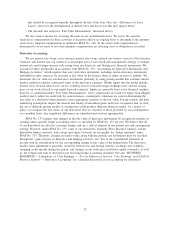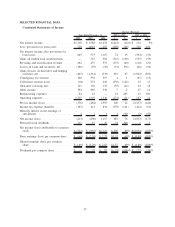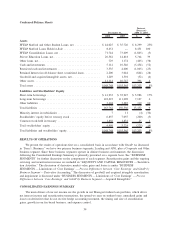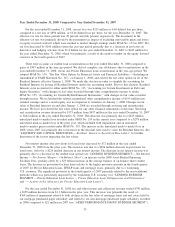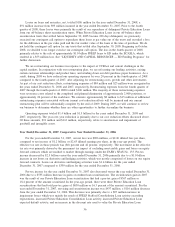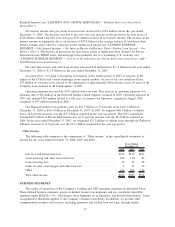Sallie Mae 2008 Annual Report Download - page 28
Download and view the complete annual report
Please find page 28 of the 2008 Sallie Mae annual report below. You can navigate through the pages in the report by either clicking on the pages listed below, or by using the keyword search tool below to find specific information within the annual report.performed, management reviews the adequacy of the allowance for loan losses and determines if qualitative
adjustments need to be considered. One technique for making this determination is through projection
modeling, which is used to determine if the allowance for loan losses is sufficient to absorb net credit losses
anticipated during the loss confirmation period. Projection modeling is an independent forward-looking
projection of net charge-offs. Assumptions that are utilized in the projection modeling include (but are not
limited to) historical experience, recent changes in collection policies and procedures, collection performance,
and macroeconomic indicators. Additionally, management considers changes in laws and regulations that could
potentially impact the allowance for loan losses.
The majority of our Private Education Loan programs do not require that borrowers begin repayment until
six months after they have graduated or otherwise left school. Consequently, our loss estimates for these
programs are generally low while the borrower is in school. At December 31, 2008, 38 percent of the principal
balance in the higher education Managed Private Education Loan portfolio is related to borrowers who are in
in-school or grace status and not required to make payments. As the current portfolio ages, an increasing
percentage of the borrowers will leave school and be required to begin payments on their loans. The allowance
for losses will change accordingly.
Similar to the rules governing FFELP payment requirements, our collection policies allow for periods of
nonpayment for borrowers requesting additional payment grace periods upon leaving school or experiencing
temporary difficulty meeting payment obligations. This is referred to as forbearance status and is considered
separately in our allowance for loan losses. The loss confirmation period is in alignment with our typical
collection cycle and takes into account these periods of nonpayment.
In general, Private Education Loan principal is charged off against the allowance when the loan exceeds
212 days delinquency. As further discussed in “LENDING BUSINESS SEGMENT — Private Education Loan
Losses — Activity in the Allowance for Private Education Loan Losses,” this period we corrected our charge-
off methodology.
In the fourth quarter of 2007, we recorded provision expense of $667 million related to the Managed
Private Education Loan portfolio. This significant increase in provision primarily related to the non-traditional
portion of our loan portfolio (education loans made to certain borrowers that have or are expected to have a
high default rate) which we had been expanding over the past few years. We have taken actions in 2008 to
terminate these non-traditional loan programs because the performance of these loans is materially different
from our original expectations and from the rest of our Private Education Loan programs. However, there can
be no assurance that our non-traditional loans outstanding will not require additional significant loan
provisions or have any further adverse effect on the overall credit quality of our Managed Private Education
Loan portfolio.
Also, we have seen higher delinquencies and continued deterioration of the overall portfolio in 2008 due
primarily to the weakening U.S. economy, which has resulted in increased provisioning for expected losses. If
the economy continues to weaken beyond our expectations, the expected losses resulting from our default and
collection estimates embedded in the allowance for loan losses could continue to increase.
FFELP loans are guaranteed as to their principal and accrued interest in the event of default subject to a
Risk Sharing level set based on the date of loan disbursement. For loans disbursed after October 1, 1993, and
before July 1, 2006, we receive 98 percent reimbursement on all qualifying default claims. For loans disbursed
on or after July 1, 2006, we receive 97 percent reimbursement. The CCRAA reduces the Risk Sharing level
for loans disbursed on or after October 1, 2012 to 95 percent reimbursement, which will impact the allowance
for loan losses in the future.
Similar to the Private Education allowance for loan losses, the FFELP allowance for loan losses uses
historical experience of borrower default behavior and a two year loss confirmation period to estimate the
credit losses incurred in the loan portfolio at the reporting date. We divide the portfolio into categories of
similar risk characteristics based on loan program type, school type and loan status. We then apply the default
rate projections, net of applicable Risk Sharing, to each category for the current period to perform our
27


